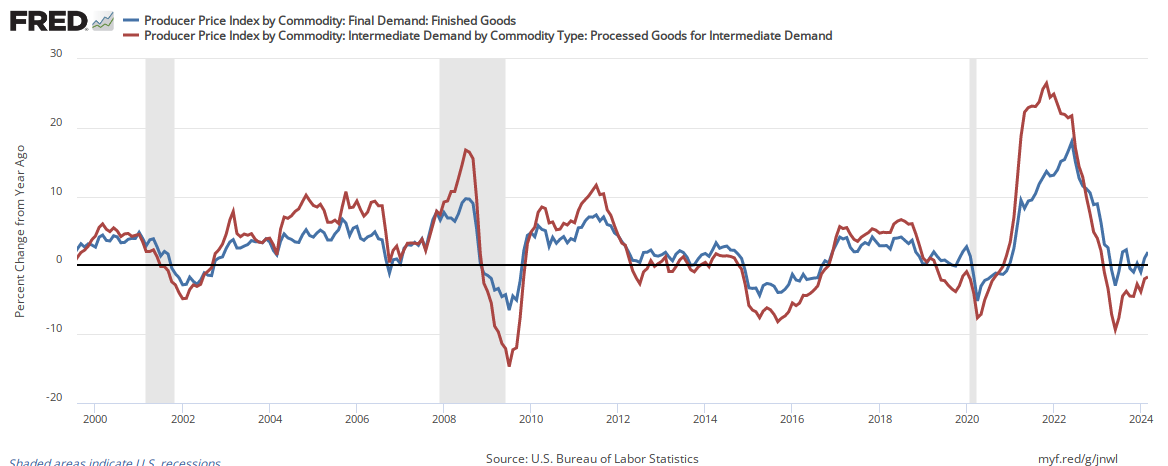August 2018 Producer Price Final Demand Year-Over-Year Inflation Moderates
The Producer Price Index year-over-year inflation declined from 3.3 % to 2.8 %.

Analyst Opinion of Producer Prices
The Producer Price Index declined year-over-year. Food prices did moderate - but energy inflation rose. The decline in inflation was more than expected. Here is what the BLS said in part:
The Producer Price Index for final demand declined 0.1 percent in August, seasonally adjusted, the U.S. Bureau of Labor Statistics reported today. Final demand prices were unchanged in July and increased 0.3 percent in June. (See table A.) On an unadjusted basis, the final demand index rose 2.8 percent for the 12 months ended in August. In August, the decline in the final demand index can be attributed to a 0.1-percent decrease in prices for final demand services. The index for final demand goods was unchanged. The index for final demand less foods, energy, and trade services edged up 0.1 percent in August after advancing 0.3 percent in both July and June. For the 12 months ended in August, prices for final demand less foods, energy, and trade services rose 2.9 percent.
The PPI represents inflation pressure (or lack thereof) that migrates into consumer price.
The market had been expecting (from Nasdaq / Econoday):
| month over month change | Consensus Range | Consensus | Actual |
| PPI-Final Demand (PPI-FD) | -0.1 % to 0.3 % | +0.2 % | -0.1 % |
| PPI-FD less food & energy (core PPI) | 0.2 % to 0.3 % | +0.2 % | -0.1 % |
| PPI-FD less food, energy & trade services | 0.2 % to 0.3 % | +0.2 % | +0.1 % |
The producer price inflation breakdown:
| category | month-over-month change | year-over-year change |
| final demand goods | +0.0 % | |
| final demand services | -0.1% | |
| total final demand | -0.1 % | +2.8 % |
| processed goods for intermediate demand | +0.0 % | +6.3 % |
| unprocessed goods for intermediate demand | -5.8 % | +2.9 % |
| services for intermediate demand | +0.1 % | +2.9 % |

In the following graph, one can see the relationship between the year-over-year change in the intermediate goods index and finished goods index. When the crude goods growth falls under finish goods - it usually drags finished goods lower.
Percent Change Year-over-Year - Comparing PPI Finished Goods (blue line) to PPI Intermediate Goods (red line)

Econintersect has shown how pricing change moves from the PPI to the Consumer Price Index (CPI).
Comparing Year-over-Year Change Between the PPI Finished Goods Index (blue line) and the CPI-U (red line)

The price moderation of the PPI began in September 2011 when the year-over-year inflation was 7.0%.
Caveats on the Use of Producer Price Index
Econintersect has performed several tests on this series and finds it fairly representative of price changes (inflation). However, the headline rate is an average - and for an individual good or commodity, this series provides many sub-indices for a specific application.
A very good primer on the Producer Price Index nuances can be found here.
Because of the nuances in determining the month-over-month index values, the year-over-year or annual change in the PPI index is preferred for comparisons.
There is a moderate correlation between crude goods and finished goods. Higher crude material prices push the finished goods prices up.
Disclosure: None.



